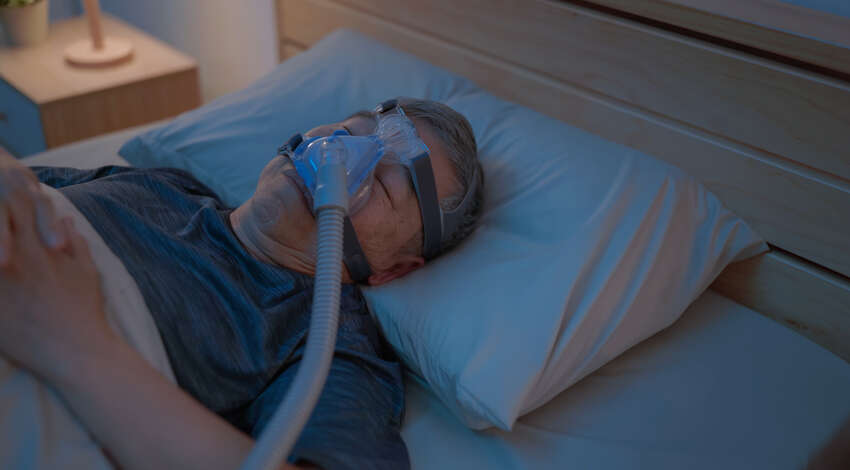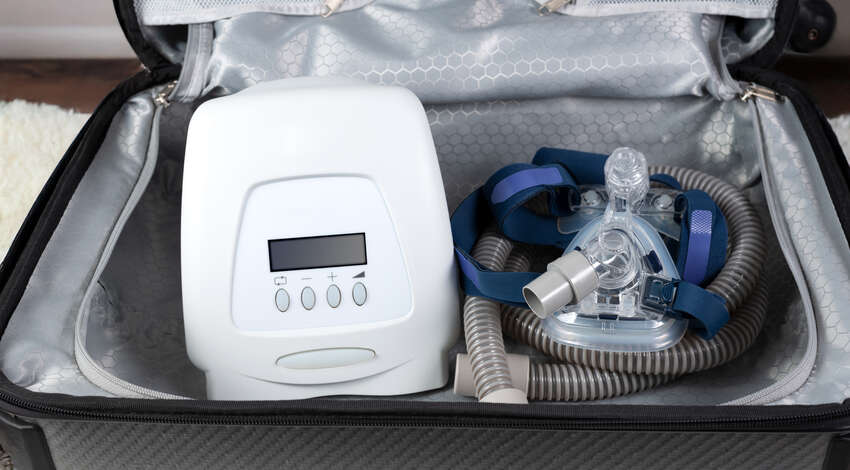Take a Deep Breath: What You Need to Know About Traveling With a CPAP Machine
Continuous positive airway pressure (CPAP) machines are helping millions of people overcome sleep apnea and get a better night’s rest. That, in turn, helps reduce the risk of heart disease and stroke. So CPAP machines are a critical part of healthy living for users.
One thing that might cause CPAP machine users to lose sleep, however, is the prospect of traveling with one. What are the obstacles? What needs to be thought out in advance? Is it even possible to travel to some places with a CPAP machine?
Let’s dive in and address these questions.

Rules and Regulations
First and foremost, is it even possible to travel with a CPAP machine?
In a word, yes. You can bring a CPAP with you when traveling by land or over water. Things are a bit more complicated when you’re traveling by air, however.
The TSA recognizes CPAP machines as essential medical devices. As a result, all major airlines must allow you to bring one on board, and use it on the plane if you wish. (It doesn’t impact your luggage allowance.)
But there are some important “howevers.” Airlines have some leeway in setting policy for bringing and using CPAP machines on board. Some have pre-notification requirements if you plan to use your machine on a flight, others have special rules about batteries and humidifiers, and so on.
What’s more, some international carriers place more restrictions on CPAP machines than do domestic carriers. To cite one example, German carrier Lufthansa permits CPAP machines to be brought aboard, but if you are going to use your machine, you must A) register in advance with their Medical Operation Centre, B) have a battery for operation because power outlets cannot be guaranteed, and C) not use a humidifier during operation. Other airlines require various combinations of pre-registration, doctor’s notes stating why the machine is needed, battery restrictions and the like.
These variations lead us to one very important piece of advice. Check your airline’s website before you travel to make sure you’re prepared to comply with whatever their specific policies are.
That said, the security process at the airport is generally quite straightforward. Always carry your CPAP machine in your carry-on bag, not your checked luggage, in order to ensure you have it if you need it and to guard against loss or theft. At the TSA checkpoint, you’ll need to remove the CPAP machine from your checked bag. You might be asked to turn it on for a brief functional check. Rarely should there be an issue — TSA agents see a lot of CPAP machines.
You should also face little difficulty getting through airport security in other countries with a CPAP machine. Having the aforementioned doctor’s note with you, and/or the owner’s manual explaining what the machine is for, could give you some added peace of mind, even though you’re unlikely to be asked for them.
Another piece of documentation to consider bringing along is a copy of your prescription. Should your machine be lost or stolen and you need to replace it, your prescription info will be helpful. You could even take a photo of your prescription, just as a backup plan.

Powering Your Machine While Traveling
Powering your CPAP machine while traveling boils down to two issues — availability and compatibility. Availability is something to think about wherever you go, and compatibility is something to consider for international travel.
With regard to availability, let’s start again with air travel. Most airlines have power outlets in the cabin, but there won’t necessarily be one accessible from your seat — obviously a concern if you plan to use your CPAP machine while in flight. For that reason, some airlines (see Lufthansa, above) require you to have a battery for operation. Some regular CPAP machines can operate on batteries, but there are also battery-operated travel versions that have the added advantage of being more compact and easier to transport. If you’re planning to use your CPAP machine on a plane, check the carrier’s policy with respect to battery operation, and perhaps plan on using a battery in any case so that power outlet availability won’t be an issue. Be sure your battery will last the intended duration of your use on a flight.
On the ground, there are other things to consider when it comes to power availability. In some circumstances, there may be no power outlets available at all in tent camping, for instance, or in rustic cabins or remote areas. Here, too, a battery-powered CPAP machine would be a wise option.
In more standard accommodations with power outlets, the outlets may not be close enough to your bed to plug in, or they may be competing with other devices for “plug space.” A short extension cord can be a handy bring-along for these occasions.
Compatibility should always be top of mind when planning international travel. First, you need to be prepared for different outlet configurations. In Europe, a variety of configurations (six types in all) are used, which are not compatible with U.S. plugs. An outlet adapter is therefore essential. Many types are readily available online. When purchasing, make sure you choose adapters that will work with the outlets at your destination(s).
The other compatibility issue concerns voltage. Countries throughout the world use varying standard voltages, with 110/120 V most common in the Americas, and 220V/230 V in Europe, Asia and elsewhere. Most CPAP machines today are dual voltage, meaning they can be operated on both voltage standards. On the power plug of your CPAP machine, look for INPUT A/C 100 V-240 V. That means you’re all set for both voltages. If your adapter is 120 V only, you will need a travel voltage converter, often sold in tandem with outlet adapters.
If you’re beginning to think you may need an electrical engineering degree to figure this all out, rest assured that in practice, it’s not at all difficult to navigate these issues. Know the plugs and the voltages, and outfit yourself with the right adapters and converters as needed. Done!

Etiquette
Now that you’ve had an overview of the legalities of CPAP machine travel and the electronic ins and outs, it’s worth mentioning compatibility of another sort — that of you and your travel mates.
Most CPAP machines today are much quieter than the models of old, but the reality is that they still do produce some noise. If you’re traveling alone, or with a spouse or other partner who has adjusted to the presence of your CPAP machine, then all’s well. But if you have a roommate, extending some small courtesies can make a big difference. Explain that you need to sleep with a CPAP machine for medical reasons. You might even want to bring along some inexpensive foam earplugs (available at any hardware or home improvement store) to offer if your roommate would find them helpful.
But be assured, too, that courtesy is a two-way street. Most people who sign on to travel with a roommate appreciate that flexibility and understanding are the name of the game. They know they may room with a snorer, or a late-night reader, or an early riser — not to mention that there are plenty of ambient sounds coming from elsewhere in a typical hotel or lodge. So your roommate will almost certainly be understanding of the medical necessity that is your CPAP machine.
When you travel with Road Scholar, every day is an adventure, and you want to be ready for it. That means getting a good night’s sleep — and if it means using a CPAP machine, bring it!

